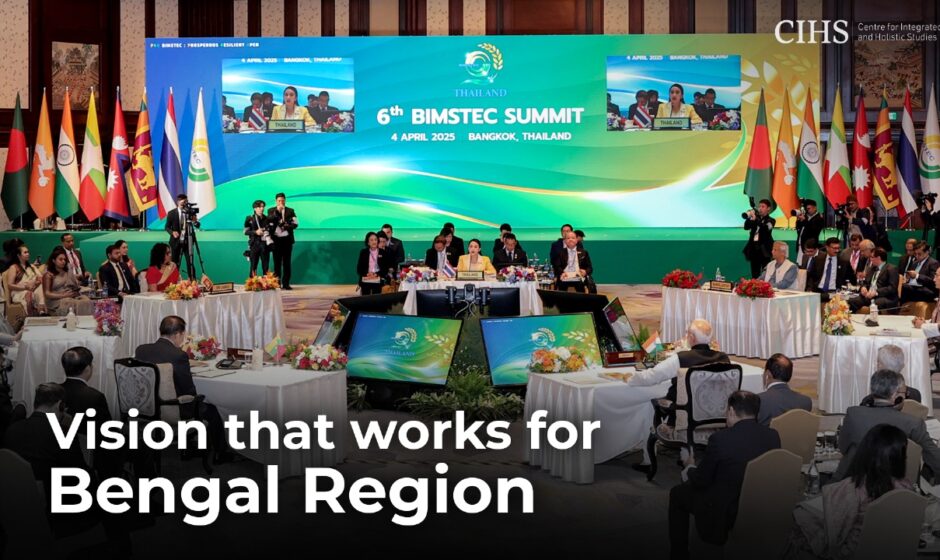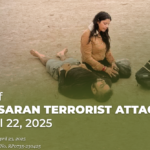India’s 21-point Action Plan operationalizes cooperation through commerce, climate, connectivity and culture anchored in grounded capabilities.
Rohan Giri
For regional groups like BIMSTEC comprising seven nations straddling South and Southeast Asia there’s hardly a big need for grand declarations.

Instead, practical architecture is need of the hour. The 21-point action plan discussed at the recent BIMSTEC summit in Bangkok, Thailand may provide a window of opportunity.
The plan mooted by Prime Minister Narendra Modi may provide the template for sustainable relations between member-countries to navigate complexity of inter-dependence, climate risk and digital transition. The proposal has gained significance due to the timing and not ambitious objectives it seeks to achieve.
Given that it is under-networked, Bay of Bengal region finds a key role that it can play in supply chain resilience, energy connection and climate vulnerability.
A structured cooperation to deal with key issues is essential for sustaining the relationship for shared prosperity of people in the region. For instance, setting up Bay of Bengal Chamber of Commerce and the decision to hold an annual business summit will work wonders for the region.
Emphasis on business and trade recognizes that economic integration is not only a desired goal but a necessity to further regional integration and ward off global disruptions. The move to explore possibility of undertaking trade in local currencies would help mitigate vulnerability to external financial disturbances.
Deliberations on shift to digital infrastructure are equally well-founded. Recognizing uneven digital capacities in the region, the idea of conducting pilot research on applicability of India’s Digital Public Infrastructure (DPI) is prudent.
Without pushing for adoption of digital infrastructure put together by Bharat, the proposal gains importance as it provides a clear path to digitizing economies in the region.
The recommendation to look at possibility of interlinking India’s Unified Payments Interface (UPI) with regional payment systems reflects the urgent need for smoother cross-border financial flows that can positively impact tourism, small businesses and migrant remittances in segments often neglected.
On physical infrastructure, it is still a long way to traverse while digital and financial corridors provide instant mobility. Reducing friction in transactions is inevitable if formal trade between countries were to flourish over long run and phase-out unofficial trade. The design of the plan seems to respect this peaceful realism.
The action plan’s emphasis on disaster management and climate readiness shows where it exhibits greater insight. Along with cooperation between national disaster response authorities, the idea of creating a BIMSTEC Centre of Excellence for Disaster Management addresses a particularly acute regional vulnerability.
Countries in Bay of Bengal region experience regular earthquakes, floods, and cyclones. Hence, the idea of a regional centre for excellence to manage disasters is more of shared insurance against environmental volatility.
Similarly, space technology cooperation is important not to further geopolitical ambition but rather as an appreciation of vital involvement in remote sensing and satellite data. This will help in agricultural planning, weather forecasting and coastal surveillance.
The idea of constructing ground training centers and cooperate on nano-satellites answers the quiet revolution in space democratisation. Access to space-based data can significantly impact small and mid-sized countries in BIMSTEC determining the difference between informed governance and ongoing vulnerability.
The projects to train 300 young people each year; grant scholarships in forestry and traditional medicine and organize capacity-building programmes for diplomats and healthcare professionals highlight the commitment to regional prosperity.
Collaborative efforts and sharing resources is an important component of this cooperation. Recommendations do not advocate depending just on institutions of any one nation. Rather, they advise utilizing existing resources and capabilities to help people in the area.
For example, public health where the support for traditional medicine research and cancer care training program through Tata Memorial Centre answers both epidemiological trends and cultural settings. These are not meant to be soft-power weapons. These are responses to address gaps in healthcare impacting millions of people.
Calls for security cooperation without securitisation and proposed ministerial level conclave to solve shared issues like cybercrime, terrorism, and trafficking are bang on the dot.
Soft security threats which often undermine governance in post-pandemic global order pose a greater challenge than traditional military hazards.
Energy integration is one area that can be fast tracked with a regional electric grid link. With Energy Centre now operational in Bengaluru, the plan aims to go beyond statements to technological harmony. Dynamic load balancing, made possible by shared grid infrastructure, lowers storage needs, fits with climate targets, and helps balance loads. These are required for sustaining economic growth in medium to long term.
Youth involvement and cultural interaction, regional athletics meet and Hackathon presents a gentler but not softer approach to regionalism. These are areas that enable development of shared generational identity
Many times, multilateral organizations fail not because of bad policies but loss of public credibility. Sporting and cultural interactions act as slow-burning engines to create relationships that legislation by itself cannot support.
A long-standing focus for BIMSTEC is maritime connectivity which is sought to be furthered by the plan to set up Sustainable Maritime Transport Centre. The plan emphasises not only shipping routes but research, creativity and capacity-building. Given the Bay of Bengal’s growing strategic relevance for world supply chains and the environmental hazards of overuse, this emphasis provides a relevant junction between economic value and environmental sensibility.
Collectively, the 21 ideas do not suggest that a new pole in world affairs is emerging. They do not assert extraordinary uniqueness. Rather, they capture demands of modern regionalism. They respond to pragmatic questions that legislators all through Global South face: How might regional cooperation be less vulnerable? How can one build without overreaching? How can one integrate without imposing control? India’s approach is conditional upon regional needs and not grandiose or minimalist. It understands that leadership in multilateral environments, especially among close neighbours is something to be operationalised through credibility, patience and alignment rather than declarations. The recommendations stay anchored in viability by providing existing institutional capability instead of building whole new systems.
(Author is a doctoral fellow at Amity University in Gwalior, content head at Centre for Integrated and Holistic Studies)



